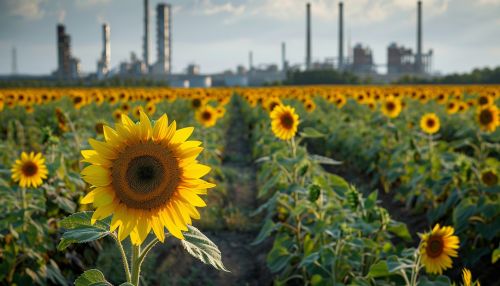Phytoextraction
Introduction
Phytoextraction, also known as phytoremediation, is a biotechnological process that utilizes plants to clean up soil or water contaminated with heavy metals and other pollutants. This process is a cost-effective and environmentally friendly alternative to traditional methods of pollution cleanup, which often involve the use of harsh chemicals or physical removal of contaminated material.
Mechanism of Phytoextraction
The mechanism of phytoextraction involves the uptake of pollutants by plant roots, which then translocate the pollutants to the above-ground parts of the plant. This process is facilitated by the plant's natural metabolic processes, particularly those involved in nutrient uptake and transport. The pollutants are then either stored in the plant tissues or transformed into less toxic forms.
The efficiency of phytoextraction is dependent on several factors, including the type of plant used, the nature of the pollutant, and the conditions of the soil or water in which the plant is grown. Certain plants, known as hyperaccumulators, have evolved to thrive in environments with high levels of specific pollutants and are therefore particularly effective in phytoextraction.


Types of Phytoextraction
There are two main types of phytoextraction: natural and induced.
Natural phytoextraction involves the use of plants that naturally accumulate high levels of pollutants in their tissues. These plants are typically grown in the contaminated area and allowed to take up the pollutants over a period of time. Once the plants have reached a certain level of contamination, they are harvested and disposed of safely.
Induced phytoextraction, on the other hand, involves the use of chelating agents to increase the bioavailability of pollutants in the soil or water. These agents bind to the pollutants and make them more easily absorbed by the plants. This method is typically faster than natural phytoextraction, but it also carries a higher risk of causing harm to the environment if the chelating agents are not used responsibly.
Applications of Phytoextraction
Phytoextraction has a wide range of applications in environmental remediation. It has been used to clean up sites contaminated with heavy metals such as lead, cadmium, and arsenic, as well as organic pollutants like polychlorinated biphenyls (PCBs) and polycyclic aromatic hydrocarbons (PAHs).
In addition to its use in environmental cleanup, phytoextraction also has potential applications in agriculture. For example, it can be used to remove excess nutrients from agricultural runoff, thereby preventing the pollution of nearby water bodies.
Advantages and Disadvantages of Phytoextraction
Like any technology, phytoextraction has its advantages and disadvantages. One of its main advantages is its cost-effectiveness. Traditional methods of pollution cleanup can be expensive and labor-intensive, whereas phytoextraction simply involves the planting and harvesting of plants.
Another advantage of phytoextraction is its environmental friendliness. Unlike traditional methods, which often involve the use of harsh chemicals, phytoextraction uses natural processes to remove pollutants from the environment.
However, phytoextraction also has its drawbacks. One of the main disadvantages is its slow pace. It can take several growing seasons for plants to accumulate significant amounts of pollutants, making this method unsuitable for situations where rapid cleanup is required.
Another disadvantage is the risk of secondary pollution. If the harvested plants are not disposed of properly, the pollutants they contain can be released back into the environment.
Future Directions
Despite its limitations, phytoextraction holds great promise for the future of environmental remediation. Researchers are currently exploring ways to enhance the efficiency of phytoextraction, such as by genetically engineering plants to accumulate higher levels of pollutants or by developing more effective chelating agents.
In addition, there is ongoing research into the use of phytoextraction in conjunction with other bioremediation techniques, such as phytostabilization and phytodegradation, to create comprehensive, sustainable solutions to environmental pollution.
